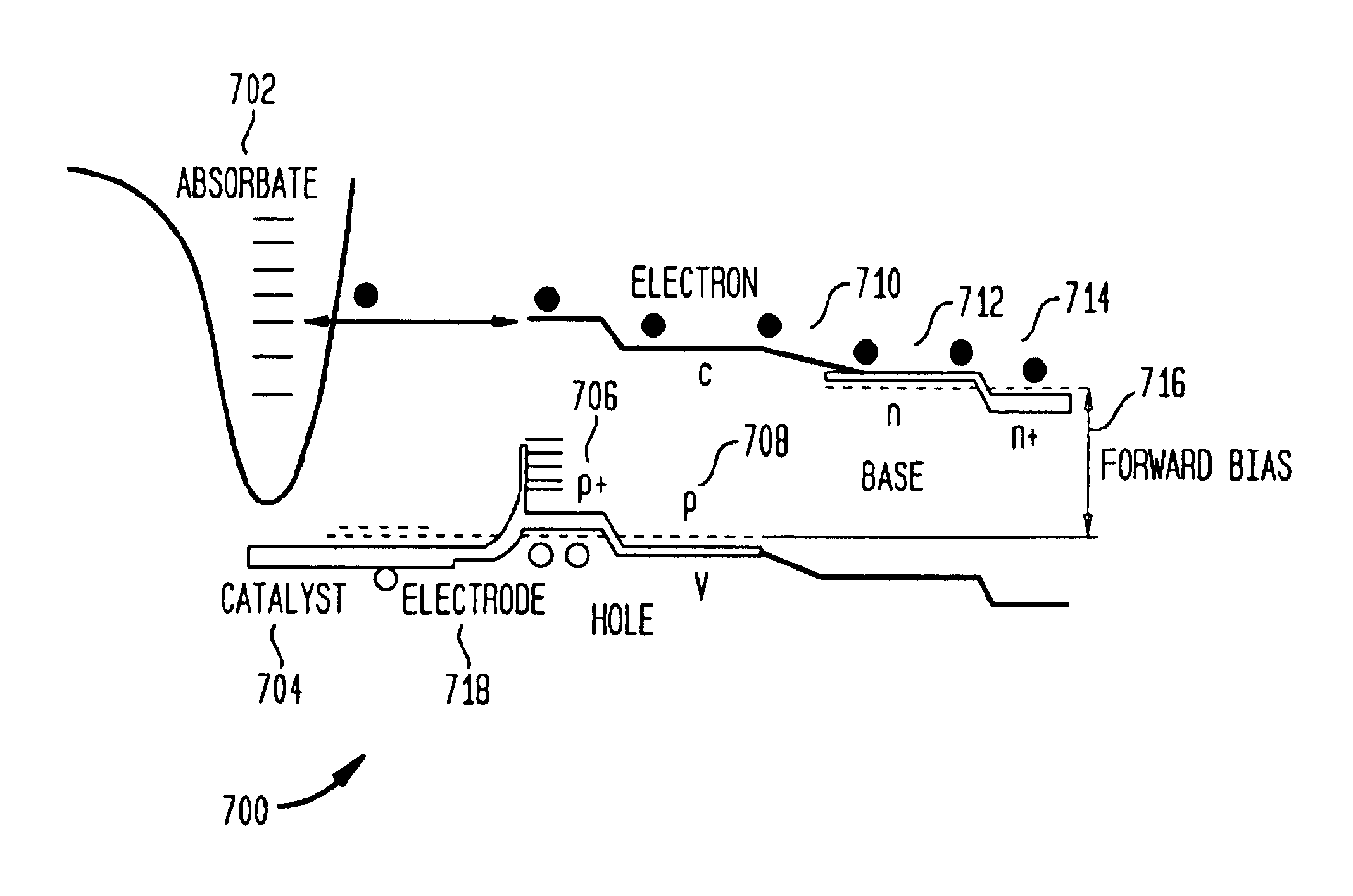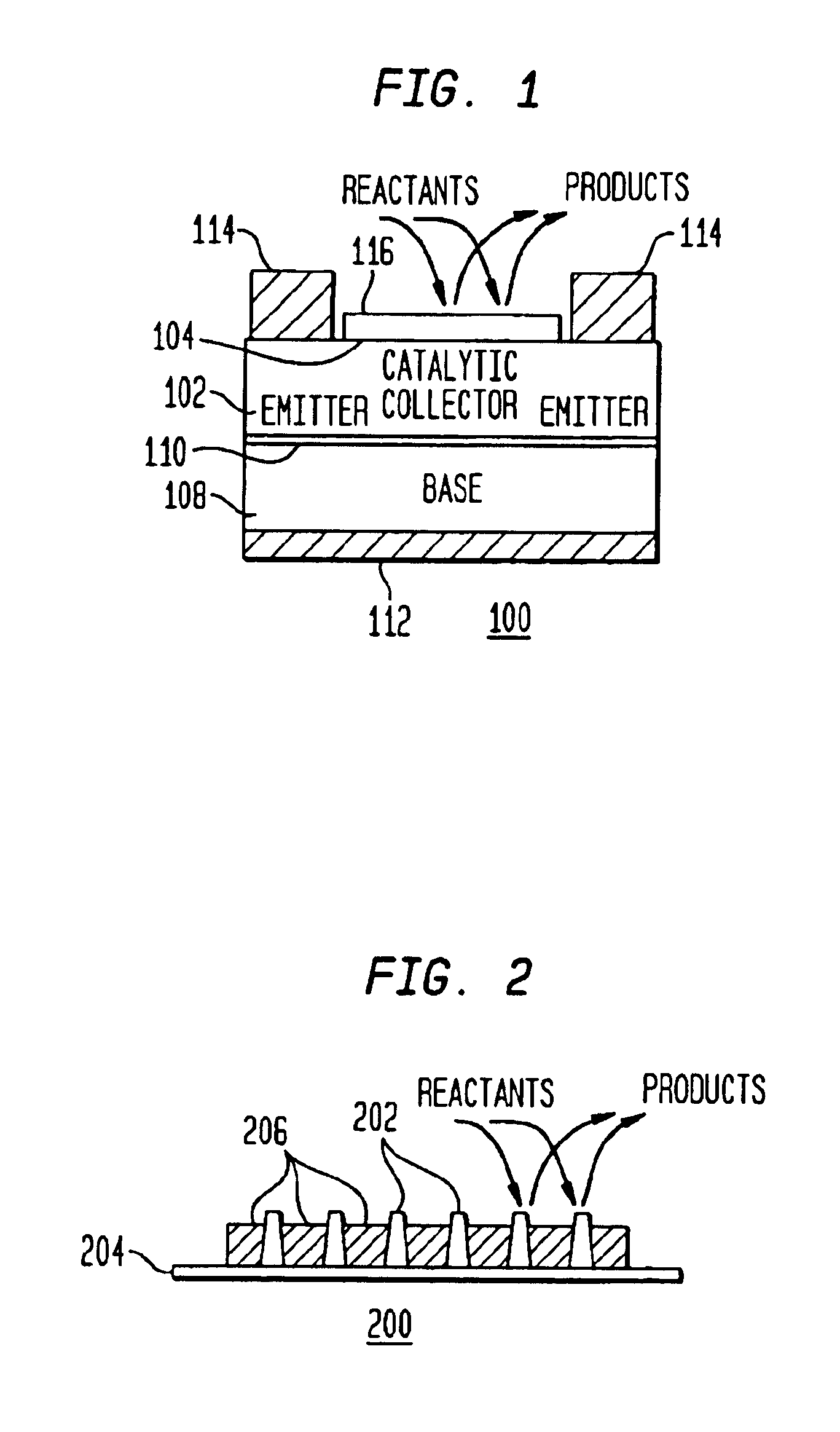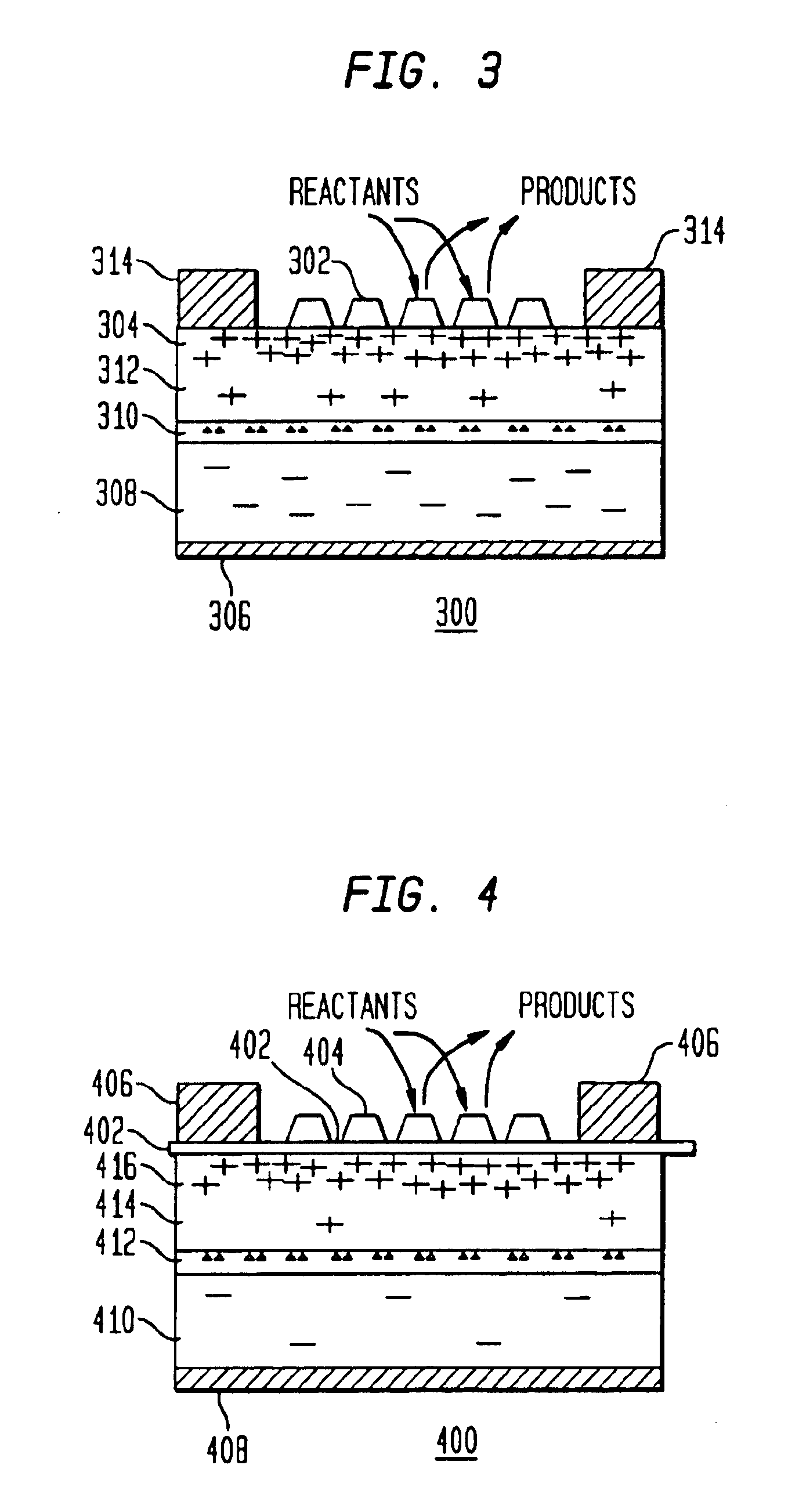Solid state surface catalysis reactor
a solid-state surface catalysis and catalyst technology, applied in the direction of generator/motor, generator/motor, physical/chemical process catalyst, etc., can solve the problems of insufficient process efficiency, energy mismatch, and laser, among the most expensive energy sources availabl
- Summary
- Abstract
- Description
- Claims
- Application Information
AI Technical Summary
Benefits of technology
Problems solved by technology
Method used
Image
Examples
Embodiment Construction
[0055]In one embodiment, the method and apparatus of the present disclosure uses hot electron energy to initiate and or simulate chemical reactions which would otherwise not occur by thermal processes alone. The non-thermal, hot electron energy tailors reaction paths between adsorbates and gas reactants interacting with a catalyst surface. One source of hot electrons is the reaction of fuel and oxidizer on a catalyst structures. Another source uses two terminal electrical devices in contact with the catalyst surface. Electricity can be generated using the same method and device from the pulsed reactions stimulated by hot electron injection. In one embodiment, the method and apparatus couples the excitation structure of a semiconductor substrate to the excitation structure of reactive adsorbates on the surface of a catalyst, The coupling is used, in one embodiment, to stimulate reactions and / or to convert chemical energy into a useful form.
[0056]In one embodiment, the method and appa...
PUM
| Property | Measurement | Unit |
|---|---|---|
| partial pressure | aaaaa | aaaaa |
| thickness | aaaaa | aaaaa |
| thickness | aaaaa | aaaaa |
Abstract
Description
Claims
Application Information
 Login to View More
Login to View More - R&D
- Intellectual Property
- Life Sciences
- Materials
- Tech Scout
- Unparalleled Data Quality
- Higher Quality Content
- 60% Fewer Hallucinations
Browse by: Latest US Patents, China's latest patents, Technical Efficacy Thesaurus, Application Domain, Technology Topic, Popular Technical Reports.
© 2025 PatSnap. All rights reserved.Legal|Privacy policy|Modern Slavery Act Transparency Statement|Sitemap|About US| Contact US: help@patsnap.com



